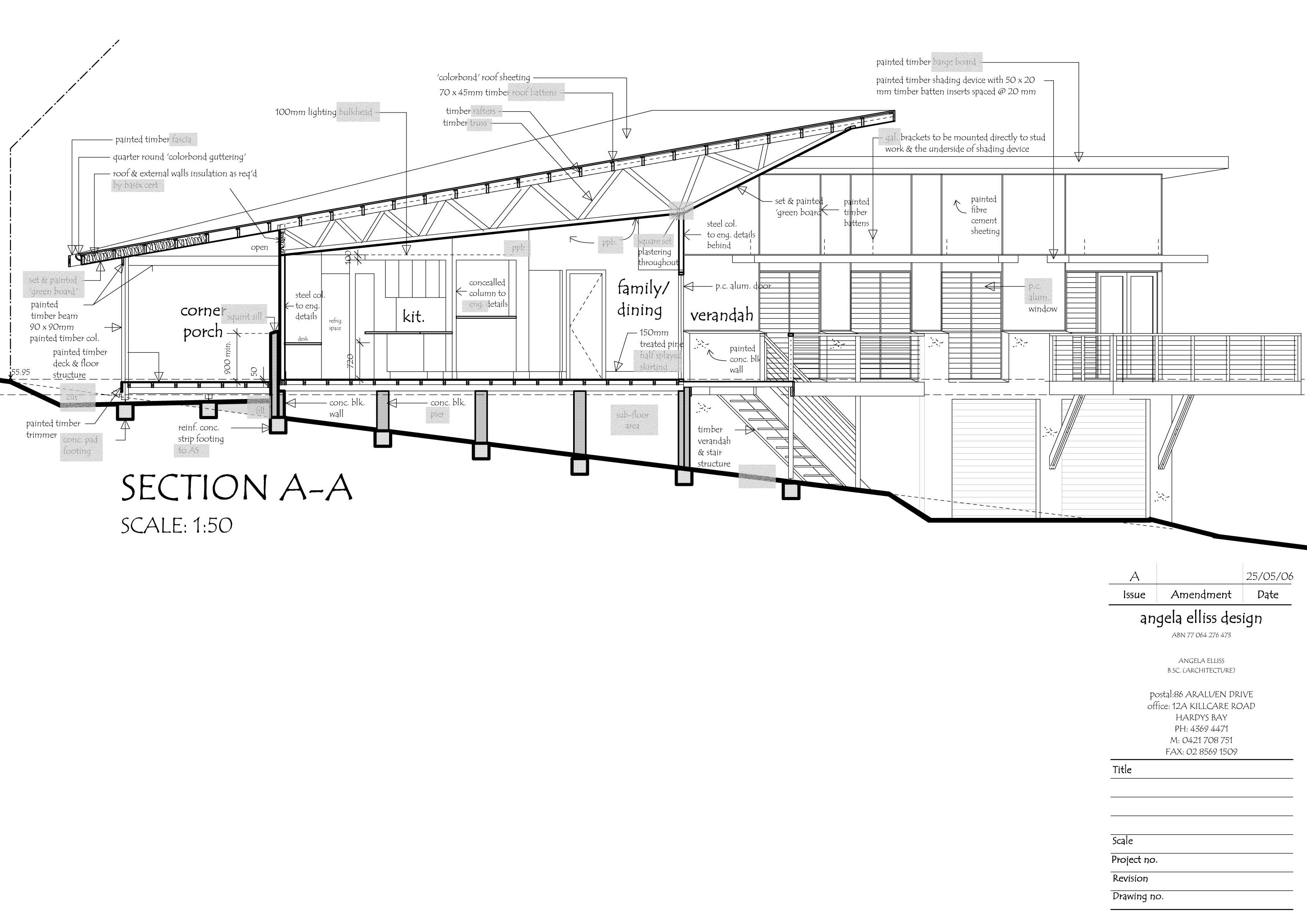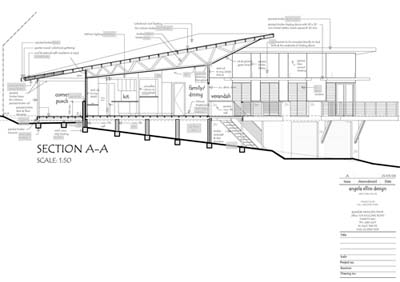• Move cursor over small image; large image will adjust
• Click small plan to freeze. Double-click to unfreeze.
• Drag the small or large image to a location of your choice.
• Large image is scrollable and has grey "hotspots"
• Move the cursor over the hotspots see a brief explanation
• Click the hotspot to see full explanation (if there is one)
• Full explanations will replace this text
• Double-click large plan to super-size it.
BASIX BASIX is the acronym for "Building Sustainability Index". Since October 2006 all development applications lodged in NSW for new homes, renovations and additions valued over $100,000 must contain a BASIX certificate. Applications for installing a pool or spa must also include a BASIX certificate. The BASIX certificate pledges the homeowner to water and energy saving commitments that must be verified by an accredited certifier before an Occupation Certificate is issued. For more information see http://www.basix.nsw.gov.au
Bulkhead Bulkhead suggests to the reader that there is a lowering of the ceiling at this point. It is usually finished in Plaster Board (Gyprock or drywall) and they are used to cover plumbing structural members such as beams or they can be added to a building to offer the inhabitants a visual separation to define spaces and add internal form interest to ceilings
Brick Pier A pier is a masonry support founded on a footing (usually concrete) The pier holds up the timber floor structure above and creates what is called a sub-floor area. A pier can be constructed as part of a brick wall - this is called an engaged pier. Also see Brick Veneer Construction
Sub-Floor Area A sub-floor area is a non-habitable space under a ground floor area where the soil is exposed and where plumbing and electrical conduits run.
Sloped Brick Sill This indicates a sloped sill.
Fascia A fascia is timber trimmer or "colorbond" member that is located at the end of your buildings trusses or rafters - and behind the gutter. It can be constructed of anything you like as long as it is practical and meets bush fire requirements for your area.
Powdercoated aluminium Powdercoated aluminium is the paint coating used on aluminium doors and windows. http://www.duluxpowders.com.au/powd/cda/powd_cda_home/1,1190,,00.html
Green board Green board is manufactured by Boral and is used in areas where moisture is a problem. Recently the products are being used by plasters in external uses. The new trend to finish large areas of fibre cement sheeting above verandahs is to use "green board" and have the joins set by a plasterer. Previously this material would have been fibre cement sheeting with plastic joiners and then painted - the plastic strip remaining very visible.
Barge Board A barge board is a piece of timber that covers the ends of rafters or trusses for aesthetic and waterproofing requirements.
Galvanised Galvanised is the protective coating applied to steel to make it more durable. Steel has varying grades of finishes - Hot dipped zinc/aluminium coatings on steel are used for roofing and rainwater goods eg. "colorbond". Hot dipped zinc coated steel is called Galvanised steel - used in the fabrication of structural steel members such as beams and columns. Stainless steel is a generic term for a family of corrosion resistant alloy steels containing 10.5% and 28% chromium. It is the most durable of the steel products in the construction industry. Austenetic stainless steel is used for household items and contains a low chromium percentage (18% ). Duplexe stainless steel "marine grade" is used in ocean side locations containing a high chromium percentage (28%).
Concrete pad footings Footings are structural components that help disperse the structural load of a building evenly to the ground. There are a few different types of footings. The most common and most economical are concrete pad footings, they are about 400x400x300D and they do not contain reinforcement. The other very common type of footings are concrete strip footings. These contain concrete and reinforcement - "Reo" and are constructed in long lengths that step up and down the landscape as is needed depending on the slope of your property. See timber wall framing Isometric drawing.
<Australian Standard Within the construction industry as well as many other industries there are standards of construction and practice. For more information see www.standards.com.au
Engineer All non standard construction as well as any reinforced concrete work will need engineers details
Roof battens Roof battens are timber pieces usually 35x70mm that span across trusses or rafters to support roof cladding ("colorbond" or tiles). See Roof truss types and conventional roof construction.
Rafters Rafters are structural roof members that are usually made of timber and are used in raked ceilings, flat rooves, skillion rooves and conventional roof situations. Rafters can be exposed or concealed. See conventional roof construction.
Trusses Trusses are a prefabricated roof frame system that has replaced the conventional roof type structure, although depending on the situation conventional rooves are still used. See Roof truss types and conventional roof construction.
Square set Square set is the term used for finished wall and ceiling junctions that do not use cornicing and its profile is like an empty square that is cut through on the diagonal.
half splayed half splayed is the name of a particular profile of architrave and skirting that sees the top 1/4 of the mitred at a 45° angle.
Cut Through The graphic "cross" in this square symbolises the cut through of a timber member

